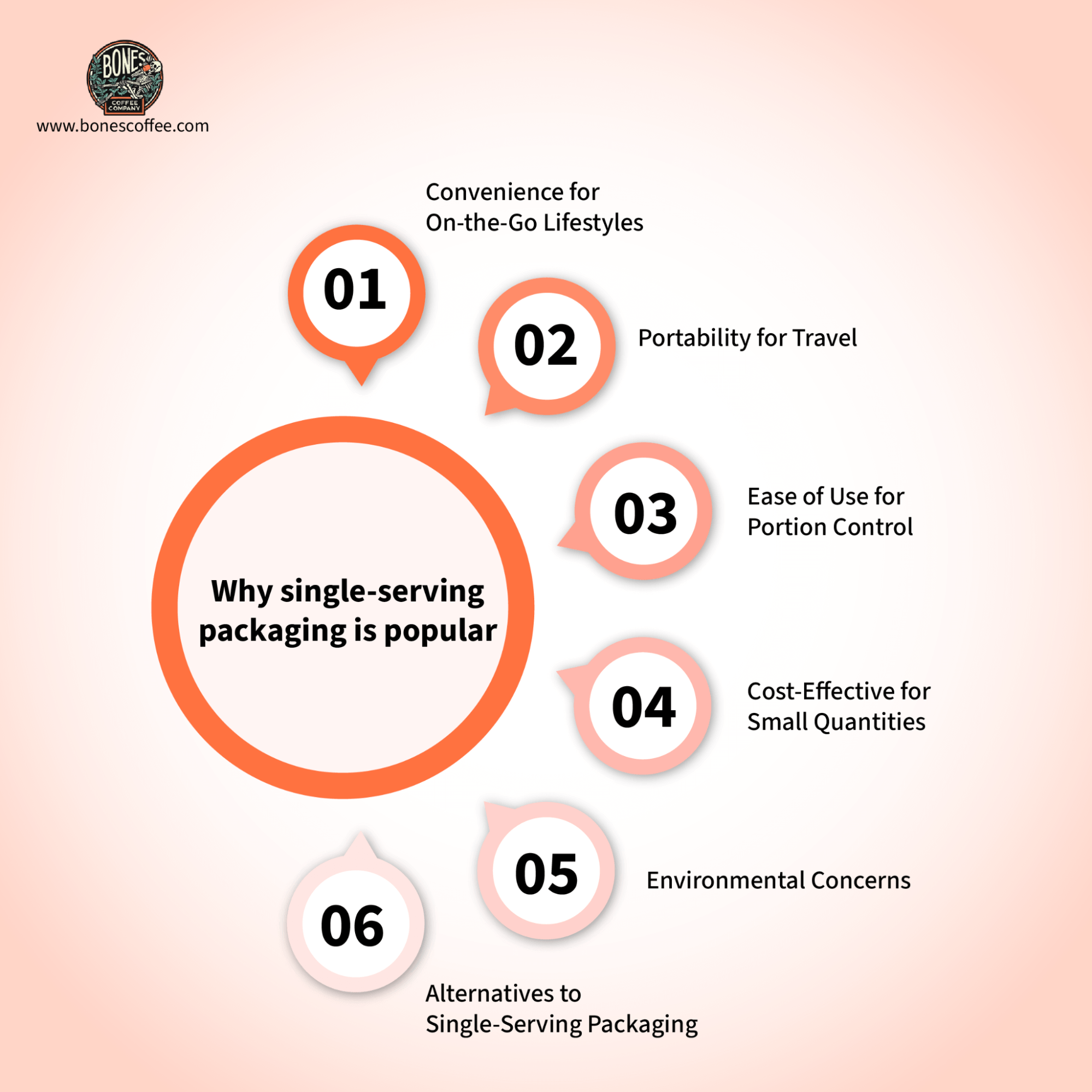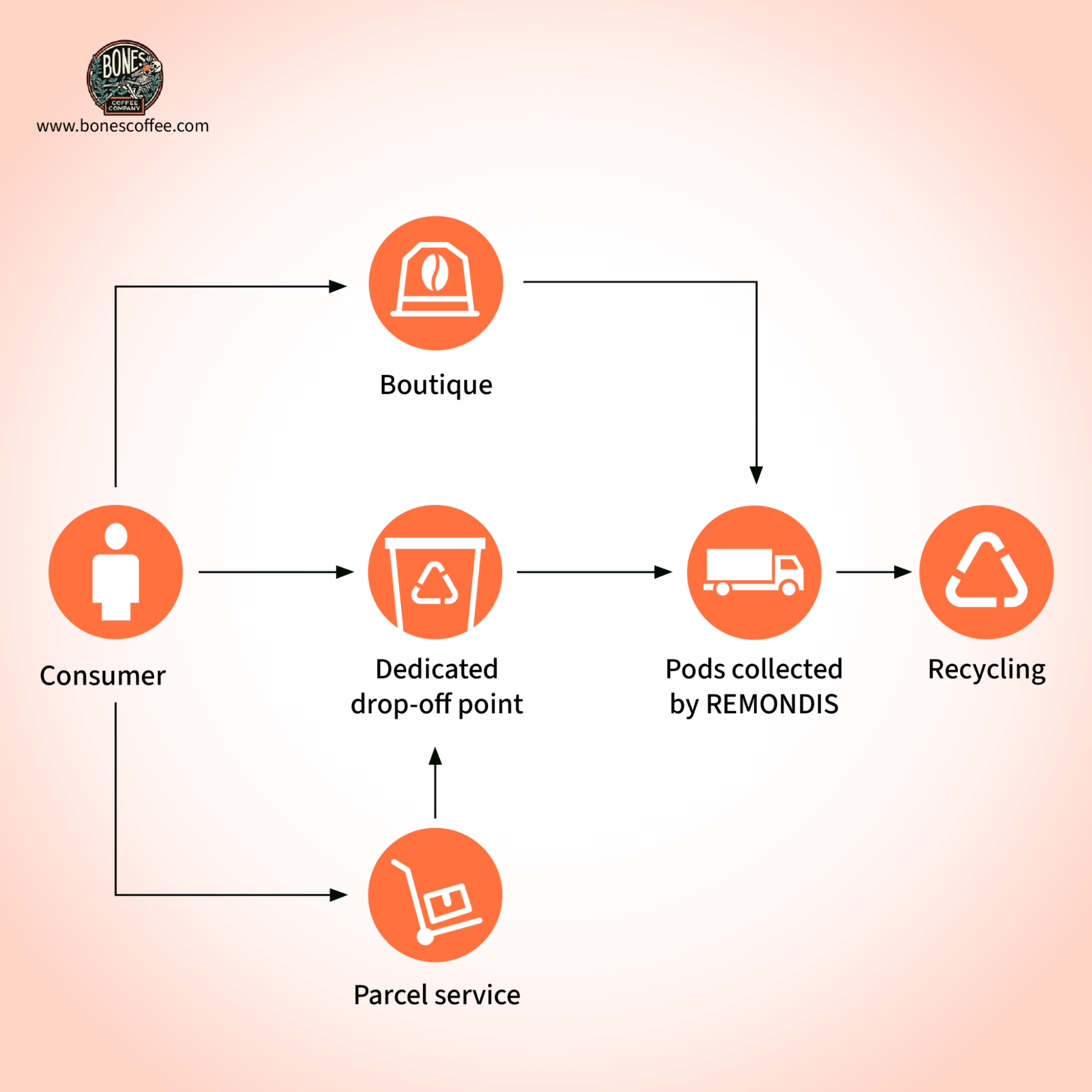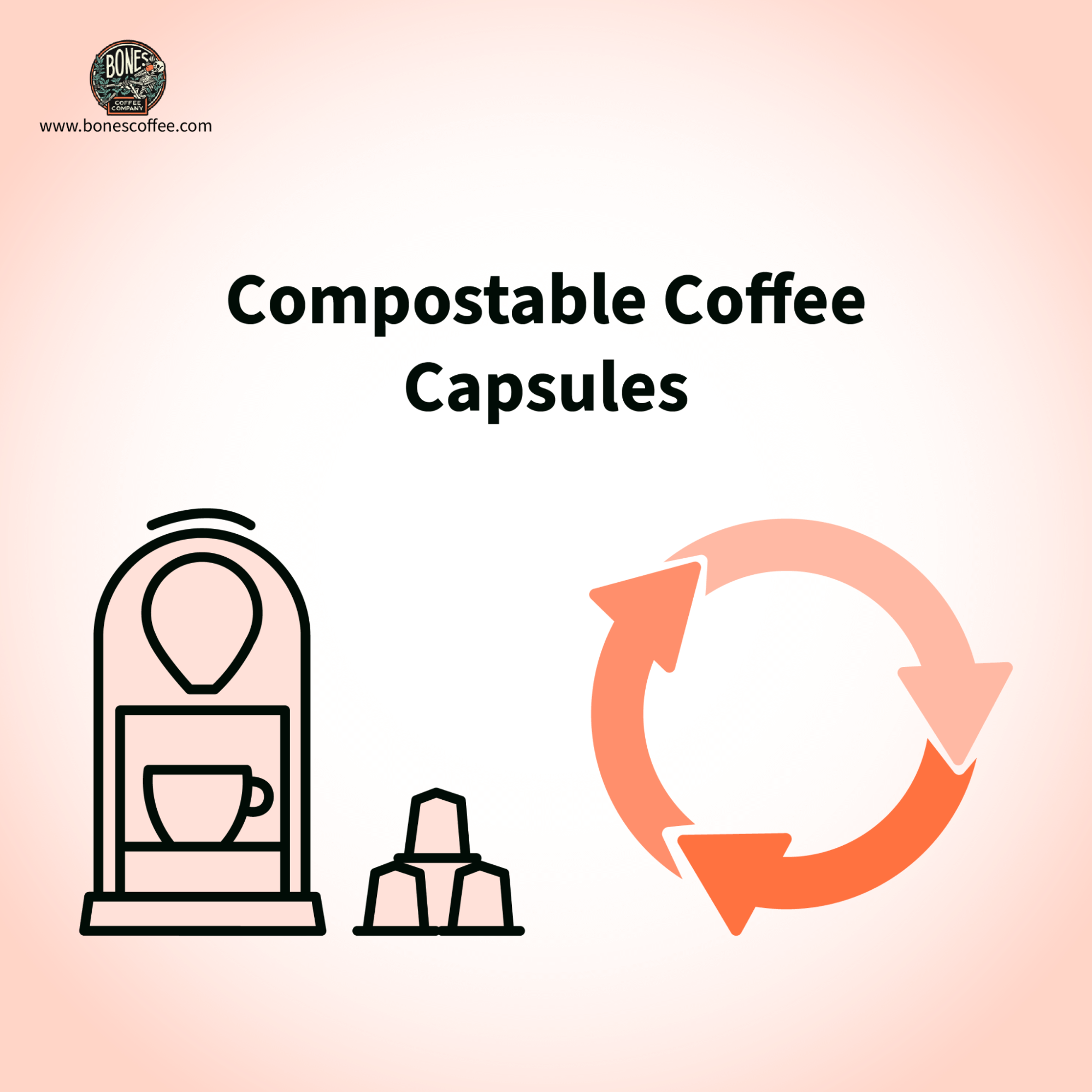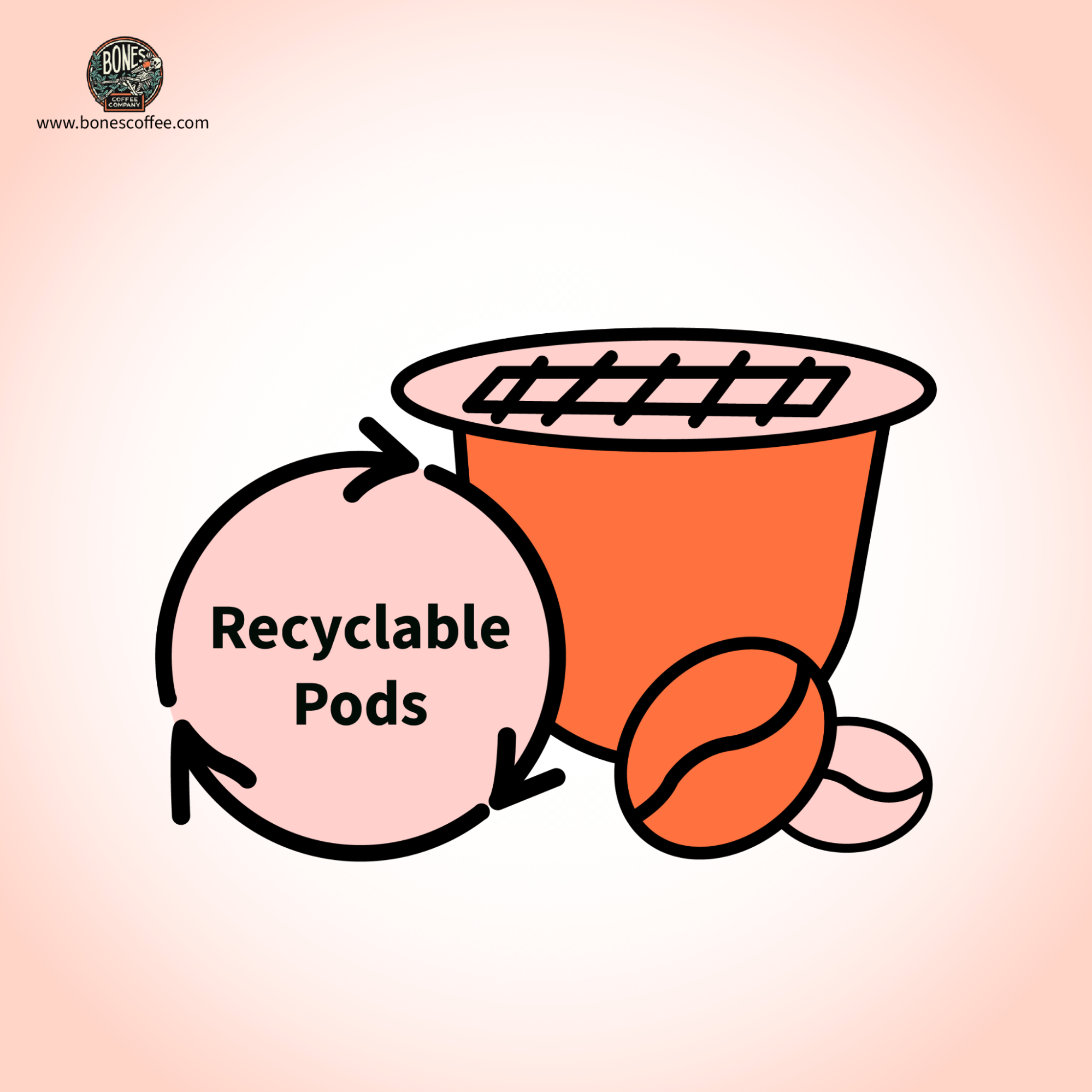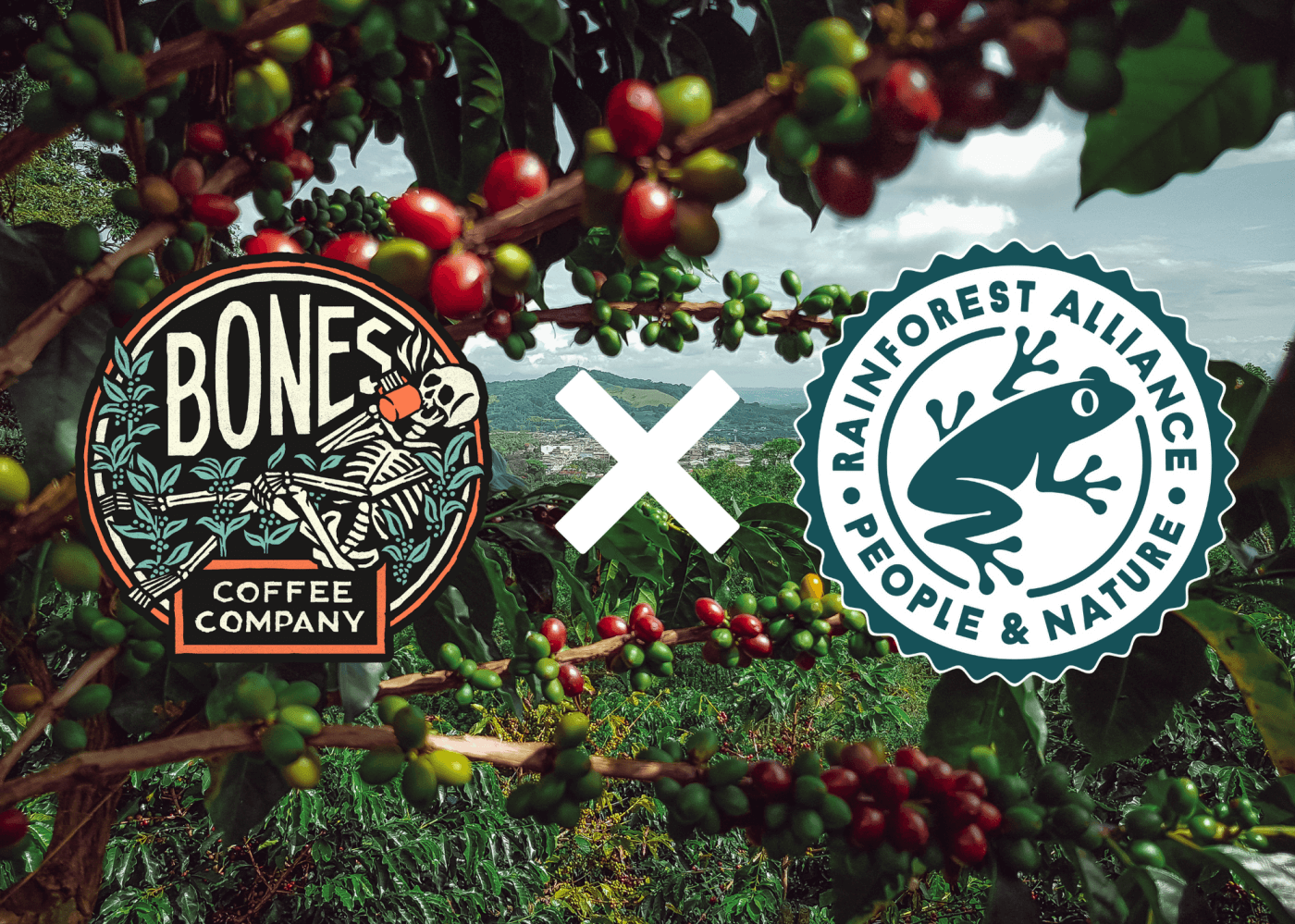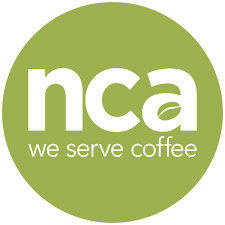 |  |  |  |
With the increasing popularity of single-serve coffee pods, their environmental impact has become a significant concern. Many consumers are seeking responsible ways to dispose of these pods to reduce waste and promote sustainability.
This guide provides comprehensive insights into effective coffee pod disposal methods, including recycling, composting, and more.
What Are Single-Serve Coffee Pods?
Single-serve coffee pods, or coffee capsules, are small containers filled with pre-measured coffee grounds.
As Stanford Magazine puts it, single-serve coffee pods offer a convenient and customizable way to brew a single cup of coffee. Insert a pod into the machine, and within a minute, you have a hot cup of coffee.
However, each cup requires a disposable plastic pod made from mixed plastics with a foil top, making them difficult to recycle and often ending up in landfills.
These machines have become increasingly common in both offices and homes across the country, now present in about 27 percent of U.S. households.
In 2013 alone, 8.3 billion pods were sold, which, if placed end to end, could wrap around the equator more than 10 times.
The structure of a coffee pod typically consists of three main components:
The Outer Shell
This is usually made of plastic or aluminum. It is designed to withstand the pressure and heat of the brewing process.
The shell also keeps the coffee grounds fresh until use.
The Coffee Grounds
Inside the shell, you’ll find the coffee itself. The grounds are often packed in a specific way to ensure optimal flavor extraction during brewing.
The Filter
This is usually located at the bottom of the pod. It allows the brewed coffee to flow out while keeping the grounds contained.
The use of coffee pods has grown in popularity due to their convenience and consistency.
Each pod is designed to brew a single serving of coffee, eliminating the need to measure out coffee grounds or clean up afterward.
The pods' sealed design also ensures that the coffee stays fresh for a longer period of time compared to traditional methods of brewing.
However, the convenience of coffee pods comes with environmental considerations.
The materials used in the construction of the pods, particularly plastic and aluminum, are not biodegradable and can contribute to landfill waste if not properly disposed of.
This has led to increased interest in recycling and composting options for coffee pods and the development of more eco-friendly alternatives.
Why Is It Important to Responsibly Dispose of Coffee Pods?
Single-serve coffee pods, while convenient and popular, pose significant environmental challenges due to their composition and the volume of waste they generate.
The importance of responsibly disposing of coffee pods can be understood by examining the following key areas:
Contribution to Landfill Waste
Single-serve coffee pods are typically made from a combination of plastic, aluminum, and organic matter (coffee grounds), which can take hundreds of years to decompose in a landfill.
According to the National Coffee Association, single-cup brewers remain one of the top two most popular methods for home coffee preparation, with 28% of users favoring them, contributing to millions of used coffee pods discarded daily. This volume of waste has a significant impact on landfill capacity.
Environmental Impact
The production process of coffee pods involves extracting raw materials, manufacturing, and transportation, all of which contribute to carbon emissions.
When coffee pods are disposed of in landfills, they can leach harmful substances into the soil as they decompose, potentially contaminating groundwater sources.
Impact on Wildlife
Improperly disposed of coffee pods can pose a threat to wildlife. Small animals can mistake the pods for food, leading to the ingestion of plastic or aluminum, which can cause injury or death.
Resource Consumption
The production of coffee pods involves the use of valuable resources, including water and energy.
By not recycling or composting coffee pods, these resources are essentially wasted, as they are used once and then sent to a landfill.
In light of these factors, it is clear that responsible disposal of coffee pods is not just an individual responsibility but a collective necessity.
By recycling, composting, or reusing coffee pods, we can mitigate their environmental impact, contribute to a more sustainable future, and transform waste into valuable products.
For example, recycling coffee pods can produce 3D-printing filaments, as demonstrated by a joint Brazilian-British research team. This team, comprising researchers from the Federal University of São Carlos, State University of Campinas in Brazil, and Manchester Metropolitan University in the UK, has successfully recycled waste polylactic acid (PLA) from used coffee pods into both conductive and non-conductive filaments.
Are Coffee Pods Recyclable?
The recyclability of coffee pods depends largely on their material composition. This may explain why approximately 56 billion coffee capsules are consumed worldwide each year, yet only 30% of these are collected for recycling by the manufacturers.
Most coffee pods are made from a combination of plastic, aluminum, and organic matter (the coffee grounds), which complicates the recycling process.
Plastic Pods
Most coffee pods are made from plastic #7, a catch-all category that includes plastics that do not fit into the other six categories.
While technically recyclable, this type of plastic is not accepted by many municipal recycling programs due to the complexity and cost of the recycling process.
Aluminum Pods
Some coffee pods are made from aluminum. While aluminum is highly recyclable and can be reused indefinitely, the small size of coffee pods often leads to them being sorted out at recycling facilities and ending up in landfills.
Additionally, the presence of organic matter (coffee grounds) can contaminate the recycling process if not properly cleaned.
Compostable Pods
A few brands offer compostable coffee pods made from bio-based materials. These pods can be disposed of in industrial composting facilities.
However, they often require specific conditions to break down properly and may not decompose in a home compost pile or in a landfill.
According to a US university-based study titled "Life Cycle Assessment of Compostable Coffee Pods," published by the National Center for Biotechnology Information (NCBI), compostable coffee pods completely degraded within 46 days in an industrial composting facility.
The facility employed a windrow-style composting method, where large mounds of organic material were regularly turned to ensure proper aeration and microbial activity.
To determine the decomposition period, the coffee pods were encapsulated in wire mesh cages and monitored throughout the process.
This rigorous testing demonstrated the efficiency of industrial composting in breaking down compostable coffee pods, highlighting their viability as a sustainable alternative to conventional plastic pods, which significantly contribute to landfill waste.
Biodegradable Pods
Biodegradable coffee pods are designed to break down over time without leaving any toxic residue.
However, like compostable pods, they require specific conditions to decompose that are not typically found in landfills.
To recycle coffee pods, consumers must typically separate the components (plastic or aluminum casing, aluminum foil top, filter, and coffee grounds) and clean them before placing them in their respective recycling bins.
Some brands offer specific recycling programs for their pods, providing prepaid mailing bags for consumers to send back used pods.
While coffee pods can technically be recycled or composted, the process is not straightforward and requires effort on the part of the consumer. The mixed materials and small size of the pods present challenges for conventional recycling systems.
As such, consumers are encouraged to seek out brands with environmentally friendly options, such as compostable or recyclable pods, or consider alternatives to single-use pods.
Case Studies
As the demand for single-serve coffee continues to rise, so does the need for sustainable solutions to manage the resulting waste from coffee pods.
Recycling programs have been launched to address this environmental challenge.
Let's look at some of the organizations that are taking significant steps to recycle coffee pods and contribute to a more sustainable future.
Podback: Leading the Way in Coffee Pod Recycling in the UK
Podback, a collaboration between leading coffee brands, is committed to recycling plastic and aluminum coffee pods in the UK.
The initiative aims to reduce waste by giving materials a new life through recycling.
The pods are shredded to separate the coffee grounds, which are then sent for anaerobic digestion to produce biogas and soil improver, while the empty pods are reprocessed into new products.
Depending on the location, consumers can recycle their pods via local council services or the Podback Drop-off service using free Podback bags.
Podback’s membership has grown to include other leading coffee brands, retailers, and independent roasters, all sharing the mission to recycle every coffee pod used.
Various achievements include partnering with local authorities and supermarkets to introduce in-store and kerbside recycling points, significantly increasing recycling accessibility and efficiency across the UK.
This expansion aligns with Podback's mission to make coffee pod recycling as easy and effective as possible, emphasizing convenience for consumers while promoting sustainability.
Podcycle: A Comprehensive Coffee Pod Recycling Initiative
Podcycle, developed by Planet Ark in collaboration with Coffee Pod Brands, is an innovative product stewardship scheme aimed at providing sustainable recycling solutions for coffee pods across Australia.
Funded initially by the Australian Government's National Product Stewardship Investment Fund, the initiative is dedicated to ensuring that all types and brands of coffee pods are collected and recycled, aligning with national sustainability goals.
Since February 2024, Podcycle has commenced limited trials in select locations, including various IGA Supermarkets and Allpress Cafes in New South Wales and Victoria. These trials are part of a broader effort to establish a nationwide scheme that will be accredited as a voluntary scheme by the Australian Government.
The objective is to make it easy for all Australians to participate in coffee pod recycling, thereby reducing environmental impact and promoting a circular economy.
The process involves collecting used pods and shredding them to separate coffee grounds from the plastic or aluminum materials. The coffee grounds are sent for anaerobic digestion to produce biogas and soil improver, while the empty pods are reprocessed into new products.
As the scheme expands, more locations and convenient recycling options will be added to ensure widespread participation and success.
Can I Compost My Coffee Pods?
Composting is a natural process that turns organic material into a nutrient-rich soil conditioner.
According to a report by European Bioplastics, organic recycling (composting or anaerobic digestion) is the optimal end-of-life option for single-serve coffee capsules. It retains the organic value of the coffee, enhances soil quality, and supports circular economy principles.
However, not all materials are suitable for composting, including some components of single-serve coffee pods.
Most coffee pods consist of three parts: the coffee grounds, the filter, and the plastic or aluminum pod itself.
The coffee grounds are fully compostable. They are rich in nitrogen, making them a valuable addition to your compost pile.
The filter, if made of paper, is also compostable. However, the plastic or aluminum pod is not compostable and should be removed before composting.
Here’s a step-by-step guide on how to compost your coffee pods:
Step 1: Separate the Components
Start by separating the coffee grounds and filter from the pod.
Some brands offer easy-to-separate pods, while others may require a bit more effort.
Step 2: Compost the Coffee Grounds and Filter
Add the coffee grounds and paper filter to your compost pile or bin. They are considered “green” compost materials, which provide nitrogen to help break down the “brown” materials, such as leaves and twigs.
Step 3: Dispose of the Pod Responsibly
If possible, the plastic or aluminum pod should be recycled. Check with your local recycling facility to see if they accept coffee pods.
Composting is a long-term process. Depending on the materials you're composting and the conditions of your compost pile, it can take anywhere from two months to two years for your compost pile to fully decompose.
While you can compost certain parts of a coffee pod, it’s important to separate the components and dispose of each one responsibly. This not only reduces waste but also contributes to the creation of nutrient-rich compost that can benefit your garden.
Carbon Footprint of Single-Serve Coffee Pods
According to Earth.org, the global footprint of annual coffee capsule waste is around 576,000 metric tons, equivalent to the combined weight of approximately 4,400 school buses.
In his book, The Blue Bottle Craft of Coffee, James Freeman, the founder of Blue Bottle Coffee, rails against single-serve coffee. In one section he calls “A Special Place in Hell: Pod Coffee,” he blasts producers for hijacking the trappings of excellence while delivering a craft-less cup. He asserts,
“Pod coffee is bad and wrong. It teases people into an industrially produced product masquerading as handcrafted. It’s simply impossible for them to make a truly tasty beverage.”
The carbon footprint of single-serve coffee pods encompasses several stages, each contributing to the overall environmental impact.
Understanding this footprint can help consumers make more informed decisions and encourage manufacturers to adopt more sustainable practices.
Plastic Production
Plastic production involves the extraction and processing of fossil fuels, which is a carbon-intensive process.
The energy required to convert these raw materials into usable plastics contributes significantly to greenhouse gas emissions.
Aluminum Production
Aluminum is another common material used in coffee pods. The extraction and refinement of aluminum from bauxite ore are energy-intensive processes.
Although aluminum can be recycled indefinitely, the initial production still carries a substantial carbon footprint.
Energy Consumption
Manufacturing coffee pods involves several steps, including molding the plastic or aluminum, filling the pods with coffee grounds, and sealing them.
Each of these steps requires energy, typically sourced from fossil fuels, further contributing to carbon emissions.
Through Planet Ark, Elise Catterall, a writer, photographer, and naturopath with a deep love for nature, recommends choosing a French press or drip coffee maker instead of single-serve machines. These brewing methods generally consume less energy. Soluble instant coffee can also be a more environmentally friendly option for the same reason.
Waste Generation
Manufacturing waste, including defective pods and excess materials, must be managed. If not properly handled, it can often lead to additional environmental impacts.
According to the study titled "Life Cycle Assessment of Compostable Coffee Pods" published by the National Center for Biotechnology Information (NCBI), the use of compostable coffee pods resulted in a 21% cost savings in waste disposal.
This significant reduction in costs is attributed to the efficient decomposition process of compostable pods in industrial composting facilities, which not only mitigates landfill waste but also creates valuable nutrient-rich compost.
Transportation and Distribution Logistics
Once produced, coffee pods are transported from manufacturing facilities to distribution centers and eventually to retail locations or directly to consumers. This transportation network relies heavily on fossil fuels, resulting in carbon emissions from vehicles, ships, and airplanes.
Packaging
The packaging that protects coffee pods during transportation also contributes to the carbon footprint.
According to Torrance Recycles, coffee capsule packaging generates approximately 966 million pounds of waste each year, which is equivalent to discarding 150,000 Hummer H2 vehicles annually.
To reduce single-use packaging, Monash Sustainability suggests using coffee machines that utilize coffee beans instead of individual pods.
Brewing Energy Consumption
The energy used to brew a cup of coffee using a single-serve machine is typically higher per serving than traditional coffee brewing methods.
Single-serve machines often use electricity to heat water quickly and maintain temperature, adding to the overall carbon footprint.
Waste Disposal
After use, coffee pods are disposed of, often ending up in landfills where they contribute to long-term carbon emissions through the slow decomposition of organic matter and the potential release of methane, a potent greenhouse gas.
Recycling Challenges
The mixed materials used in coffee pods (plastic, aluminum, organic coffee grounds) present significant recycling challenges.
Many recycling facilities cannot handle these small, mixed-material items, leading to a low recycling rate and increased landfill waste.
Composting Limitations
While some coffee pods are marketed as compostable, they often require industrial composting facilities to break down effectively.
Home composting systems may not reach the necessary conditions, leading to incomplete decomposition and environmental contamination.
Future Trends and Innovations
According to Earth.org, coffee capsules have become widespread, and by 2025, the global market for these products is projected to exceed $29 billion. Predominantly made of plastic, these pods are currently popular in Europe and North America.
However, research indicates that their popularity is likely to expand in Asian markets, particularly in China and South Korea.
As the global market for coffee capsules expands, the associated waste increases as well. It is for this reason that there is an urgent need for sustainable practices in the coffee industry.
Fortunately, several promising trends and innovations are emerging to address the environmental impact of single-serve coffee pods.
Innovative Materials
Researchers and companies are developing new biodegradable materials derived from plants, fungi, and other renewable resources.
These materials are designed to break down more efficiently in natural environments, reducing the long-term environmental impact.
Enhanced Decomposition
Advances in material science are leading to biodegradable coffee pods that decompose faster and more completely in a wider range of conditions, including home composting systems. This development could significantly reduce the volume of waste ending up in landfills.
Automated Sorting
New technologies in recycling facilities, such as advanced optical sorting systems and AI-powered robots, are improving the ability to separate and process the different materials in coffee pods. This increased efficiency can lead to higher recycling rates and reduced contamination.
Chemical Recycling
Innovations in chemical recycling processes can break down complex plastics into their base components, allowing for the recovery and reuse of materials that were previously difficult to recycle. This approach could make recycling coffee pods more viable on a large scale.
Energy-Efficient Manufacturing
Companies are investing in energy-efficient manufacturing processes, including using renewable energy sources such as solar and wind power. These practices reduce the carbon footprint associated with the production of coffee pods.
Reduced Resource Use
Advances in manufacturing technology are enabling the production of coffee pods with thinner walls and less material without compromising quality. This reduction in resource use contributes to a lower overall environmental impact.
Take-Back Programs
Several coffee companies are implementing take-back programs to encourage consumers to return used coffee pods for proper recycling or disposal.
These programs often provide incentives such as discounts or loyalty points to encourage participation.
However, not all coffee lovers use a mail-back program. In such a case, Recycle Right suggests separating the coffee grounds and composting them in your backyard bin or pile, then discarding the capsule in the trash.
Closed-Loop Systems
Some manufacturers are adopting closed-loop systems, where the materials from used coffee pods are collected, processed, and reused to create new pods. This approach minimizes waste and promotes the continuous reuse of resources.
Awareness Campaigns
Companies and environmental organizations are launching campaigns to educate consumers about the environmental impact of coffee pods and the importance of proper disposal. These initiatives aim to increase recycling rates and encourage the adoption of sustainable alternatives.
According to Tensie Whelan, director of New York University’s Center for Sustainable Business and former president of the Rainforest Alliance,
“People love the convenience of the single serving, and they’re going to go for convenience over waste. But most people feel guilty about it." All people need is a push.”
These campaigns provide the necessary encouragement to make more environmentally conscious choices.
Eco-Friendly Certifications
Eco-certifications and labels, such as the Rainforest Alliance or Fair Trade, are becoming more prominent on coffee pod packaging. These certifications help consumers identify products that meet high environmental and social standards, promoting more sustainable purchasing decisions.
Are There Any Eco-Friendly Alternatives to Traditional Coffee Pods?
In recent years, the coffee industry has made significant strides in developing eco-friendly alternatives to traditional single-serve coffee pods.
These alternatives aim to provide the same convenience and quality as traditional pods while minimizing their environmental impact.
Biodegradable Coffee Pods
One of the most promising alternatives is biodegradable coffee pods. These pods are made from plant-based materials that break down naturally in the environment, reducing landfill waste.
For example, The Green Ring claims to make its plant-based coffee capsules from sugarcane and sugar beet.
Compostable Coffee Pods
Another alternative is compostable coffee pods. Unlike biodegradable pods, compostable pods break down into nutrient-rich compost when disposed of in industrial composting facilities.
However, according to a case study titled "Life Cycle Assessment of Compostable Coffee Pods," published by the National Center for Biotechnology Information (NCBI), the Life Cycle Assessment (LCA), a methodology for assessing the environmental impacts associated with all stages of a product's life, included in the study revealed that manufacturing compostable pods has a slightly higher energy demand compared to plastic pods due to the materials used.
Reusable Coffee Pods
Reusable coffee pods are another eco-friendly option. These pods are made from durable materials like stainless steel or plastic and can be refilled with ground coffee.
While reusable pods have a higher upfront cost, they can be used multiple times, making them a cost-effective and environmentally friendly choice in the long run.
It’s important to note that while these alternatives are more eco-friendly than traditional coffee pods, they still have an environmental impact. For instance, biodegradable and compostable pods require specific conditions to break down properly, and not all communities have access to industrial composting facilities.
Reusable pods, however, require cleaning after each use, which can consume water and energy. Therefore, consumers should consider these factors when choosing an eco-friendly alternative.
Are There Any Laws or Regulations About Disposing of Coffee Pods?
The legal landscape regarding the disposal of coffee pods varies significantly across regions and countries. While no specific laws directly address this issue, general waste management and recycling regulations may apply.
In many jurisdictions, household waste disposal, including coffee pods, is governed by local waste management laws. These laws often require residents to separate their waste into different categories, such as general waste, recyclable materials, and organic waste. Failure to comply with these regulations can result in penalties, although the enforcement and severity of these penalties vary.
In some regions, Extended Producer Responsibility (EPR) laws are in place. These laws require manufacturers to take responsibility for the end-of-life management of their products.
This can include taking back used products for recycling or contributing to waste management costs. In the context of coffee pods, coffee pod manufacturers must provide take-back programs for used pods or contribute to the costs of recycling or disposing of their pods.
In the European Union, for example, the Packaging and Packaging Waste Directive requires producers to contribute to the costs of managing packaging waste, which could include coffee pods.
Similarly, in some Canadian provinces, EPR laws require producers to manage the end-of-life of their products, including packaging.
However, it’s important to note that applying these laws to coffee pods is not always clear-cut, and enforcement can be inconsistent. These laws do not necessarily prevent the use of single-use coffee pods but instead place the responsibility for managing their waste on producers.
Regarding specific regulations for coffee pods, no laws specifically require coffee pods to be recyclable or compostable.
However, some jurisdictions, like Germany, ban or restrict certain single-use plastics, which could apply to plastic coffee pods.
While there are no specific laws regarding the disposal of coffee pods, general waste management and recycling regulations and EPR laws may apply. As such, it’s crucial for consumers to be aware of their local regulations and to dispose of their coffee pods responsibly.
How Can I Reduce My Environmental Footprint When It Comes to Coffee Consumption?
Reducing your environmental footprint regarding coffee consumption involves a multi-faceted approach.
Here are some strategies you can adopt:
Choose Certified Coffee
Look for certifications like Fair Trade, Rainforest Alliance, and Organic. These labels ensure that the coffee is grown using sustainable farming practices that protect the environment and provide fair wages to farmers.
Use a Reusable Cup
Single-use cups contribute significantly to landfill waste. By using a reusable cup, you can drastically reduce this waste.
Opt for Manual Brewing Methods
Automatic coffee machines consume a lot of energy, especially those using single-serve pods. Manual brewing methods like French press, pour-over, or Aeropress are more energy-efficient.
Compost Coffee Grounds
Coffee grounds are rich in nitrogen, making them a great addition to your compost pile. Composting coffee grounds reduces the waste going to the landfill and enriches your garden soil.
Buy in Bulk
Purchasing coffee in bulk reduces the amount of packaging waste. Just make sure to store the coffee properly to maintain its freshness.
Choose Eco-Friendly Coffee Pods
If you must use single-serve coffee pods, opt for brands that offer biodegradable or compostable pods.
Recycle Coffee Pods
If eco-friendly pods are not an option, recycle them. Some brands offer take-back programs for their pods.
Support Sustainable Coffee Brands
By choosing brands that prioritize sustainability, you support their efforts and encourage other brands to follow suit.
Every small step counts. Even if you can’t adopt all these practices, implementing just a few can make a significant difference.
Embrace Sustainable Coffee Pod Disposal
This guide emphasizes the importance of responsibly disposing of single-serve coffee pods. Through recycling, composting, and supporting innovative initiatives, consumers can significantly reduce the environmental footprint of their coffee consumption.
By participating in these practices, we can collectively work towards a more sustainable future, ensuring that our love for coffee does not come at the expense of our planet.
Definition of Terms
Landfill
Site where non-recyclable waste is buried. Coffee pods end up in landfills and contribute to environmental pollution.
Decompose
The breakdown of organic materials into simpler compounds. Coffee pods decompose slower in landfills due to a lack of oxygen and microbial activity.
Bio-based Materials
Derived from renewable biological resources, such as corn or sugarcane, used to make compostable coffee pods.
Aeration
The process of introducing air into materials which is crucial in composting to promote the decomposition of coffee pods.
Microbial Activity
The actions of microorganisms that break down organic matter. Essential for the composting of coffee pods.
Anaerobic Digestion
A process where microorganisms break down organic materials without oxygen, producing biogas. Used to process coffee grounds from pods.
Biogas
A mixture of gases, primarily methane, produced through anaerobic digestion of organic matter like coffee grounds.
Kerbside Recycling Points
Designated areas where households can place their recyclable waste, including coffee pods, for collection.
Carbon Footprint
The total greenhouse gas emissions are caused by an individual, organization, or product. Recycling coffee pods helps reduce the carbon footprint.
Soluble Instant Coffee
A type of coffee that dissolves in water without the need for brewing, typically having a lower environmental impact compared to coffee pods.
Advanced Optical Sorting Systems
Technology used in recycling facilities to automatically sort materials based on their type, ensuring efficient recycling of coffee pods.
Closed-loop Systems
Recycling processes where products are recycled into new products of the same type, such as turning used coffee pods into new coffee pods.
References
- magazine, S. (2016) Coffee Pods: A Happy Ending, stanfordmag.org. Available at: https://stanfordmag.org/contents/coffee-pods-a-happy-ending (Accessed: 31 July 2024).
- Eiermann, A. et al. (2020) ‘Extraction of single serve coffee capsules: linking properties of ground coffee to extraction dynamics and cup quality,’ Scientific Reports, 10(1). Available at: https://doi.org/10.1038/s41598-020-74138-1.
- National Coffee Association (2024) Daily coffee consumption at a 20-year high, up nearly 40%, www.ncausa.org. Available at: https://www.ncausa.org/Newsroom/Daily-coffee-consumption-at-20-year-high-up-nearly-40.
- IOM3 (no date) Coffee pods recycled for 3D-printing filaments, www.iom3.org. Available at: https://www.iom3.org/resource/coffee-pods-recycled-for-3d-printing-filaments.html (Accessed: 31 July 2024).
- The 7 Different Types of Plastic (2021) Plastics For Change. Available at: https://www.plasticsforchange.org/blog/different-types-of-plastic#:~:text=no%2Dgo.- (Accessed: 31 July 2024).
- Kooduvalli, K., Vaidya, U.K. and Ozcan, S. (2020) ‘Life Cycle Assessment of Compostable Coffee Pods: A US University Based Case Study,’ Scientific Reports, 10(1). Available at: https://doi.org/10.1038/s41598-020-65058-1.
- COFFEE CAPSULES SHOULD MANDATORILY BE COMPOSTABLE -WHY THE EUROPEAN COMMISSION GOT IT RIGHT IN THE REVISED RULES ON PACKAGING AND PACKAGING WASTE (PPWR) (no date). Available at: https://docs.european-bioplastics.org/publications/pp/EUBP_PP_Compostable_Coffee_Capsules.pdf (Accessed: 31 July 2024).
- Mongabay (2022) Coffee Capsules: Brewing Up An (In)Convenient Storm of Waste, Earth.org. Available at: https://earth.org/coffee-capsules-waste/.
- Thomas, C. (2013) How to make mediocre coffee that’s expensive and wasteful, The Ethical Nag. Available at: https://ethicalnag.org/2013/10/02/coffee-pods/#:~:text=In%20his%20book (Accessed: 31 July 2024).
- Everyday Enviro with Elise: reducing the carbon footprint of coffee (no date) planetark.org. Available at: https://planetark.org/newsroom/news/everyday-enviro-with-elise-reducing-the-carbon-footprint-of-coffee (Accessed: 31 July 2024).
- Kooduvalli, K., Vaidya, U.K. and Ozcan, S. (2020) ‘Life Cycle Assessment of Compostable Coffee Pods: A US University Based Case Study,’ Scientific Reports, 10(1). Available at: https://doi.org/10.1038/s41598-020-65058-1.
- Coffee Pods & Capsules (no date) Torrance Recycles. Available at: https://torrancerecycles.org/guide/coffee-capsules/ (Accessed: 31 July 2024).
- Coffee pods (no date) Campus Sustainability. Available at: https://www.monash.edu/campus-sustainability/get-involved/waste-recycling/coffee-pods-ready.
- Mongabay (2022) Coffee Capsules: Brewing Up An (In)Convenient Storm of Waste, Earth.org. Available at: https://earth.org/coffee-capsules-waste/.
- Coffee Pods (no date) Recycle Right. Available at: https://recycleright.org/recycling_category/coffee-pods/ (Accessed: 31 July 2024).
- Guilt-free coffee pods? Meet the 100% compostable answer to your caffeine fix - NYU Stern (no date) www.stern.nyu.edu. Available at: https://www.stern.nyu.edu/experience-stern/about/departments-centers-initiatives/centers-of-research/center-sustainable-business/news/guilt-free-coffee-pods-meet-100-compostable-answer-your-caffeine-fix (Accessed: 31 July 2024).
- The Compostable Capsule (2017) The Green Ring. Available at: https://thegreenring.org/compostable-capsule.html (Accessed: 31 July 2024).
- Kooduvalli, K., Vaidya, U.K. and Ozcan, S. (2020) ‘Life Cycle Assessment of Compostable Coffee Pods: A US University Based Case Study,’ Scientific Reports, 10(1). Available at: https://doi.org/10.1038/s41598-020-65058-1.
- Coalition (SPC), S.P. (2021) Extended Producer Responsibility - SPC’s Guide, epr.sustainablepackaging.org. Available at: https://epr.sustainablepackaging.org/.
- European Commission (2022) Packaging waste, environment.ec.europa.eu. Available at: https://environment.ec.europa.eu/topics/waste-and-recycling/packaging-waste_en.
- EPR regulations expanded in Canada and the US | Food Packaging Forum (2021) www.foodpackagingforum.org. Available at: https://www.foodpackagingforum.org/news/epr-regulations-expanded-in-canada-and-us (Accessed: 31 July 2024).
- German city bans plastic coffee pods in another win for the environment (2016) Global Citizen. Available at: https://www.globalcitizen.org/fr/content/german-city-bans-coffee-pods-in-another-win-for-th/ (Accessed: 31 July 2024).



